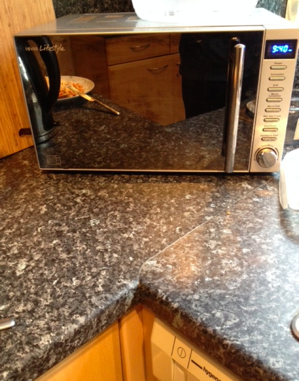
by Lloyd Smith
Bold statement I know, but bear with me. I must point out before I upset anyone associated with teaching art as a profession in education that I currently hold a position as a learning assistant within a Secondary School and realise the narrow gateway that curriculum often allows. I must also make an emphasis on the word ‘can’ in the title. Many of the classes I have witnessed have been taught at an inspiringly outstanding level. I often find myself in awe of the engaging lessons teachers can produce.

Teaching ability isn’t being doubted here, but more the hierarchy – the ladder, if you were, of art education. Does it need to adapt to the contemporary art world one becomes so exposed to at a higher education level? Or is it in fact a question of the definition of ‘art’ in itself? Or both?
Quick pre-warning, I’m now going to do that cliché thing where you quote the definition of a word – so, ‘art’ being “the expression or application of human creative skill and imagination, typically in a visual form such as painting or sculpture, producing works to be appreciated primarily for their beauty or emotional power,” how the hell do you get more from a photograph of a microwave than in an art class?
It’s not so much about the photograph’s content, but a metaphorical filler for a way of ‘seeing’. Like one of those annoying idioms that have evolved within the English language such as ‘break a leg’ or ‘hit the roof’, which, may I add, are extremely difficult for someone on the autistic spectrum to come to terms with. Of course my specific feature of a ‘microwave’ has no literal, or even non-literal, relation to a way of ‘seeing’. It could potentially be a photograph of anything. I chose a microwave as I was visually drawn to take a photograph of it – but as an interest of visual stimuli it is completely subjective. A second look, followed by repeated gazes at the photograph snapped using my iPhone has led to me drawing an increasing amount of significance from what is physically there.
This particular microwave, my own, is highly reflective. I could see myself, the food I was just about to intake, a kettle full of water, the time, the word ‘lifestyle’ etc. Analytically I could withdraw fundamental elements of our human existence from the photograph, but I won’t go into that now. The point is we can ‘see’ something in everything, if we really ‘see’ and not just look, as James Elkins has so kindly taught me in his book ‘The Object Stares Back’. It is quite extraordinary how much we overlook everyday.
This is a moment to stop.
Take a good look at something for about 30 seconds that is within close proximity of you. Really absorb the visual information. Analyse it – both visually and conceptually.
Now, hang on Lloyd – I hear you ask. You are suggesting that eleven year olds in a school art class need to be taught about metaphorical ways of ‘seeing’ as a way of accessing the current contemporary art scene? Good question.
Not exactly is my answer.
There is evidently a successful efficiency in the current system of progress in art education. An integral focus on technical skill and research in schools allows students to explore their interest in art through into further education. Perhaps where they will develop these techniques and some conceptual understanding – only to realise when they decide to continue study at a higher education level that an art practice can take form in other ways. The research remains important, but the skill doesn’t necessarily have to be technical. There seems to be a skill focused around a way of thinking that has been missing. Something that could be in addition to the current arts programmes through education, possibly even an intervention that could be in support of all current curriculum? A programme that would allow students to really question the terms ‘success’ and ‘failure’ as they so ambiguously should be.
Don’t worry this isn’t a petition for some kind of creative programme to be put in place, not yet at least. What I am trying to highlight is probably the most current and in someway and somehow, post-current, issue in terms of art.
Education is the future – if we follow chronemic structure. Without being able to ‘see’ from a different perspective, is there a danger of us being surrounded by exact sameness? – an art world of clones, whereby everyone had ‘good’ ability to draw, paint and sculpt, which led them to study it at degree level.
I think there is a need for change. Forgive me for sounding political and dramatic. Nothing is failing as such, as it never really could do (that’s an example of me questioning the ambiguity of ‘failure’). There is just a potential for changing the understanding of ‘art’ that each individual has. Hopefully it would allow for less of an instant dismissal from a general public on the, as some friends have so kindly put, ‘”bullshit” of a niche art world.
Phil Beadle made a statement that stuck with me whilst speaking at a conference on behaviour in schools –
“We can only change ourselves. No one else.”
As we should be explicitly aware of, but that’s not to say that we cannot allow for others to access this change through our own.
Of course you can get more from being in an art classroom than from a photograph of a microwave on a lazy Sunday morning, but the system can be blinding. We mustn’t forget to ‘see’ that.

Leave a Reply